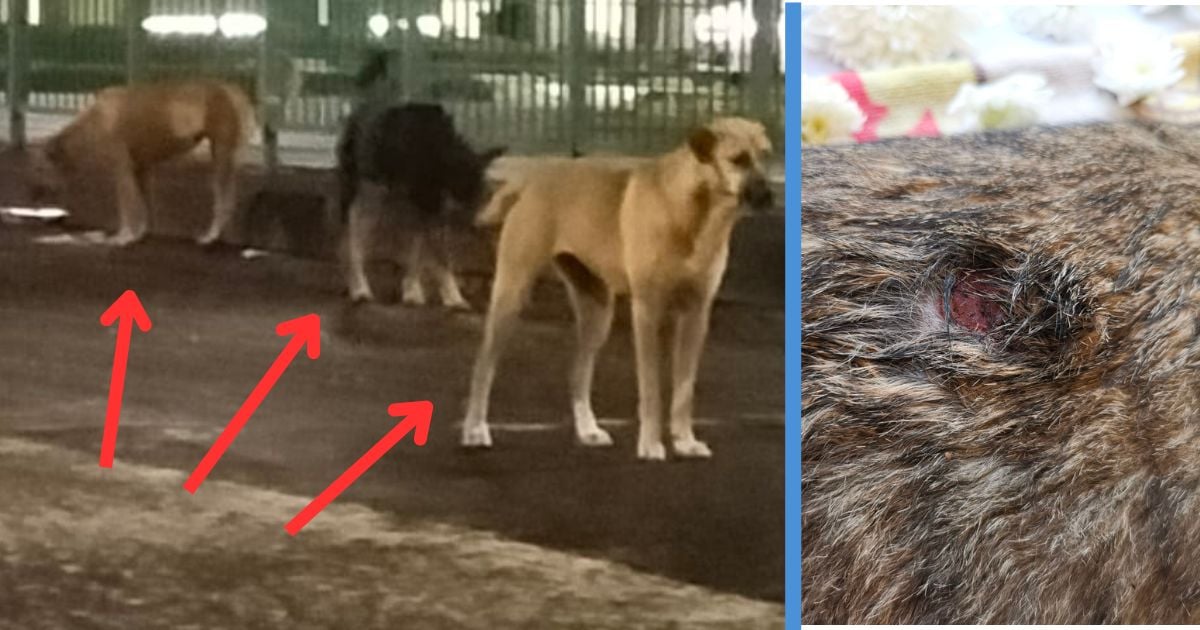The culprits behind a spate of murders happening across Singapore have finally been apprehended.
However, instead of humans, the culprits in question are actually a pack of three dogs responsible for the deaths of more than 50 cats.
For almost eight months, cat lovers have been trying to track down the pack, which regularly roams the Ang Mo Kio, Serangoon North and Jalan Kayu areas. (With some speculating that the pack has gone as far as Paya Lebar during their killing sprees)
The anxious tension and worry in the hearts of community cat feeders may finally begin to ease up, as the Animal and Veterinary Service (AVS) has managed to capture two out of the three dogs involved in the killings.
Cat Feeders Were Alerted to The Deaths of Around 20 Cats Back in January, with the Victims Only Continuing to Grow in Number
On 19 January 2023, Mothership had received a tip from a local cat feeder, regarding alleged dog attacks that have claimed the lives of more than 20 cats.
The post by Mothership included pictures of several cats that appeared to have sustained puncture wounds and teeth marks, as well as photos of the pack of dogs that were observed to have roamed around Ang Mo Kio.
The post also revealed that AVS had responded to the incidents, identifying the dogs as having been sterilised in a prior Trap-Neuter-Release-Manage (TNRM) programme. AVS added that it would work with community animal caregivers to track down and guide the dogs away from Ang Mo Kio.
Cat Feeders Resorted to Different Solutions to Protect Cats
Despite the efforts, more cats continued to be claimed as victims, with the death toll rising to 30 in the month of February and more than 50 by September.
While AVS had attempted to condition the dogs with food and other forms of reinforcement, progress had been excruciatingly slow. Furthermore, the dogs began to pose more of a threat as they began to roam outside areas outside of Ang Mo Kio.
This led to rising complaints amongst the cat feeding community, with some claiming that the dogs had begun to chase after people as well (even though no human injuries were reported). In response to the concerns, AVS set up traps to hopefully capture the pack though it resulted in limited success.
AVS’s group director of community animal management, Dr Chang Siow Foong, said, “The reports show that the dogs roam widely, are elusive and avoid the traps. For the trapping to be successful, AVS would need time to condition the dogs.”
In the time leading up to the capture of the two dogs, cat feeders have tried their best to shelter community cats from falling victim to the still-at-large dogs. These methods included holding nightly patrols (with some lasting until 5 or 6am) and temporarily housing the cats inside their homes each night, which has taken a toll on the well-being (and wallets) of some cat feeders.
One cat feeder, Nisha Kaur, reportedly spent S$1,800 per month paying for boarding for five cats to protect them from potential attacks. She also prepared food for the dogs to lure them away from areas where community cats often roam.
While the capture of the two dogs may finally bring some relief to the worn-out community of cat feeders, one dog from the pack has not yet been captured.
Meanwhile, AVS aims to rehome the two dogs to prevent future harm from being done to community cats in the area.



